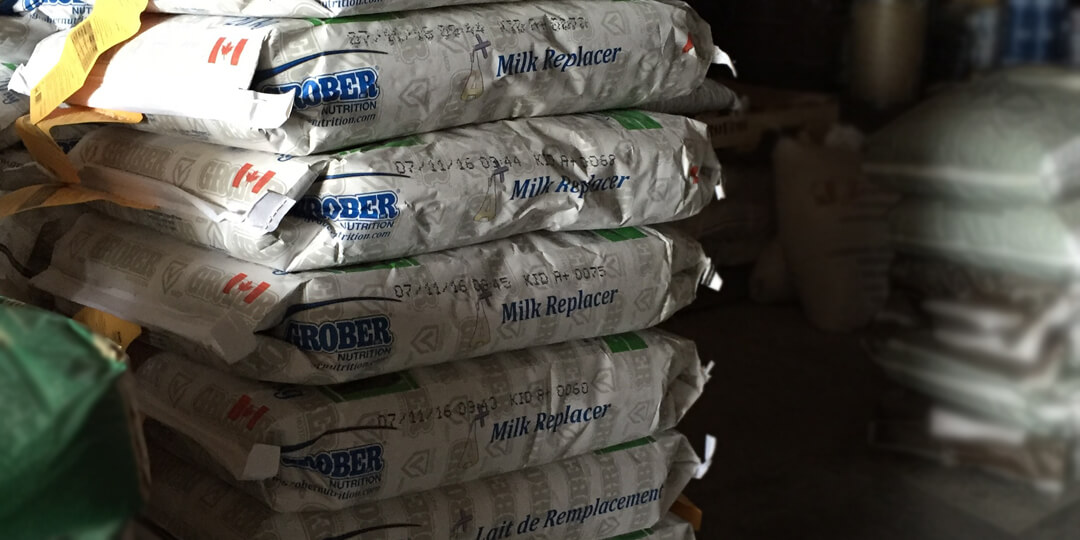Milk Replacer Storage
- Mar 23, 2012
- By Grober Nutrition
- In Canada
Grober® milk replacers are a blend of dry milk ingredients, fat filled whey powder and freeze dried liquid fat blend. The combination of fat sources allows Grober to offer a unique fatty acid profile along with competitive pricing. Moisture content is typically very low (<5%) to inhibit mold and bacterial growth. However without storage considerations, temperature fluctuations common to Canadian weather may affect product integrity. Below is a summary of recommendations to ensure powder remains easy to prepare and feed to young animals. These procedures apply to warehouse storage, transportation and farm storage. Summer – warmer temperatures/humidity (25°C/77ºF)
- High temperatures combined with high humidity can introduce moisture forming clumps. The length of time product is stored will increase the likelihood of these clumps.
- Humidity is increased with a barn full of animals – milk replacer should ideally be stored in a dry and separate area
- Clumps and moisture can increase risk of spoilage – fat oxidation may impact smell and taste and potentially affect the nutritive value of the product
Fall, winter, spring – cooler temperatures (≤0°C/32ºF)
- Milk replacer powder that is subject to rapid temperature changes (cold to warm and vice versa) will cause condensation that may form clumps making it difficult to:
- Break up for measuring
- Require more effort (hand mixing) to dissolve the powder
- With improper mixing, can lead to a decrease in digestibility
Optimal Storage of milk replacer
- Observe the principles of FIFO (first in-first out)
- Do not store product in a kitchen where steam is produced and contained
- Do not store the product in barns filled with animals generating heat and moisture
- Do not store product near a water source (in event of leak)
- Consider pests (mouse, rats, house pets, birds, etc)
- Minimize the number of skids piled high – Max. 2 skids high to reduce compaction effects.
- Close/seal bag when not in use; product can be frozen (and re-warmed slowly) if saving for following season in the case of seasonal breeding.
- Optimal storage temperature: from 5 to 20°C (41-68ºF), relative humidity ≤ 60%
Comment
When product is stored for more than 1 year, there is a risk of fat oxidation and loss of vitamin activity (most notably the fat soluble vitamins A, D, and E). To avoid oxidation, product should be kept in dry conditions and reduced light exposure.
Grober Nutrition
Recent Posts
Tags
Archives
- April 2024
- January 2024
- December 2023
- October 2023
- September 2023
- August 2023
- June 2023
- December 2022
- November 2022
- October 2022
- August 2022
- July 2022
- June 2022
- May 2022
- April 2022
- March 2022
- February 2022
- January 2022
- August 2021
- February 2021
- September 2020
- June 2020
- April 2020
- May 2017
- April 2017
- October 2016
- September 2016
- August 2016
- March 2016
- March 2015
- January 2015
- December 2014
- December 2013
- September 2013
- May 2013
- January 2013
- December 2012
- November 2012
- March 2012
- March 2011
- February 2011
- November 2010
- August 2010
- December 2009
- November 2009
- March 2009






